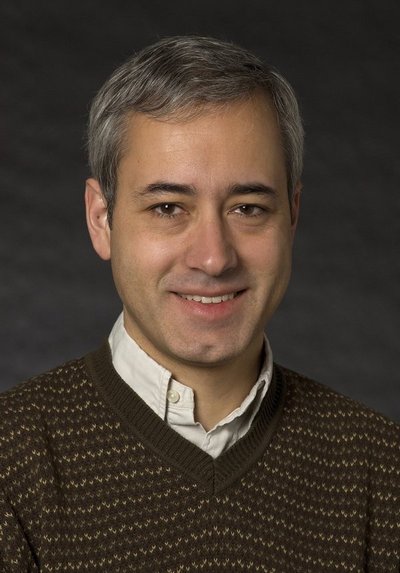April 16, 2008
UW to lead $6.25 million project creating electronic Sherlock Holmes
The University of Washington will lead a multi-institutional group pushing the limits of computers’ ability to interpret data and ultimately predict the behavior of complex systems. The project, involving seven U.S. universities, has received a $6.25 million, 5-year grant from the Department of Defense.
“A complex monitoring system has far too many pieces of information for any one person to look at,” said principal investigator Pedro Domingos, a UW associate professor of computer science and engineering. “This award lets us do the research to develop a system for the military to look at all the available information that might be valuable and use it to predict behavior.”
The basic approach is the same as that of fictional detective Sherlock Holmes: using the powers of reasoning to discover the best explanation for a set of clues. But today’s reasoning can’t be done by a single, pipe-smoking sleuth. The modern military has millions of possible clues, including sensors on soldiers, satellite maps, road monitors, aerial drones and written observations from reconnaissance missions. The Army Research Office that provided the grant wants to make sense of this information in order to make decisions and predict an adversary’s next moves.
Although machine learning and artificial intelligence are increasingly used in Web commerce and financial investment, the way those situations are handled today is relatively simple compared to what this project will attempt.
“Existing systems look at one type of sensor data, like text or images,” Domingos said. “But in this situation you have to go to a higher level and integrate different types of information. This tool will have to be able to handle high degrees of complexity and uncertainty, and to scale up to a large system.”
The new Multidisciplinary University Research Initiative grant is designed to bring together diverse expertise to confront the challenge. The eventual products, while likely to be useful to the Army, will be publicly available.
“The applications are enormous,” Domingos said. In fact, Holmes’ sidekick, Dr. Watson, and the rest of the medical community may someday benefit from more sophisticated use of machine learning, he said. For example, a computer could combine X-rays, photographs, test results and patient information to make a tentative diagnosis. The information could even include data from sensors that track a patient’s movements and heart rate for weeks at a time. Such an approach would not seek to replace doctors, Domingos said, but would provide another tool for the medical profession.
“This is a great success both for Pedro and for the department,” said Hank Levy, chair of the UW’s department of computer science and engineering. “These are large and highly competitive awards that allow researchers to tackle significant challenges.”
Other team members are: Thomas Dietterich at Oregon State University and Raymond Mooney at the University of Texas at Austin, who will develop machine learning algorithms; Carlos Guestrin at Carnegie Mellon University, who will create decentralized analyses for sensor data; Jerry Hobbs at the University of Southern California’s Information Sciences Institute, who will work on interpreting textual data; Henry Kautz at the University of Rochester, who will do experimental work recognizing activity from human movements; and Josh Tenenbaum at the Massachusetts Institute of Technology, who will study human reasoning as a model for machine reasoning.
###
For more information, contact Domingos at (206) 543-4229 or pedrod@cs.washington.edu.
More information on Domingos’ research is at http://www.cs.washington.edu/homes/pedrod/. Information on the MURI awards program is at http://www.defenselink.mil/releases/release.aspx?releaseid=11765.

